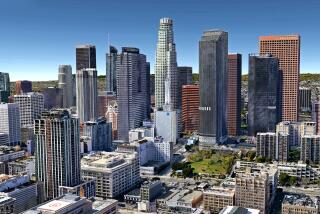Those massive Century Plaza Towers are fully leased for first time since the 1970s
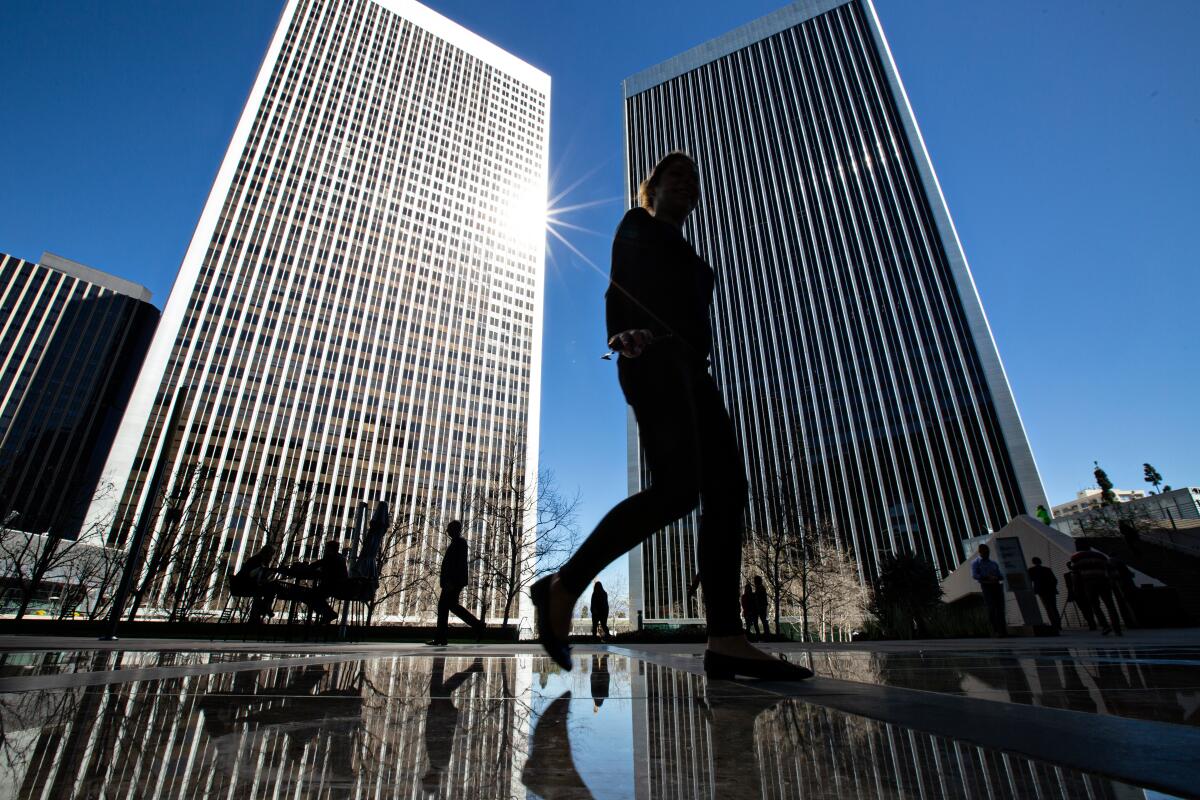
Century City’s signature twin office skyscrapers, which were designed in the 1970s by the architect of New York’s World Trade Center, are fully occupied for the first time in their existence.
The fact that the Century Plaza Towers are finally full is a testament to the rising fortunes of Century City and the enduring appeal of deluxe high-rise offices in an era when many growing businesses, including entertainment and tech giants, prefer to set up shop in cleverly converted industrial buildings or sprawling campuses.
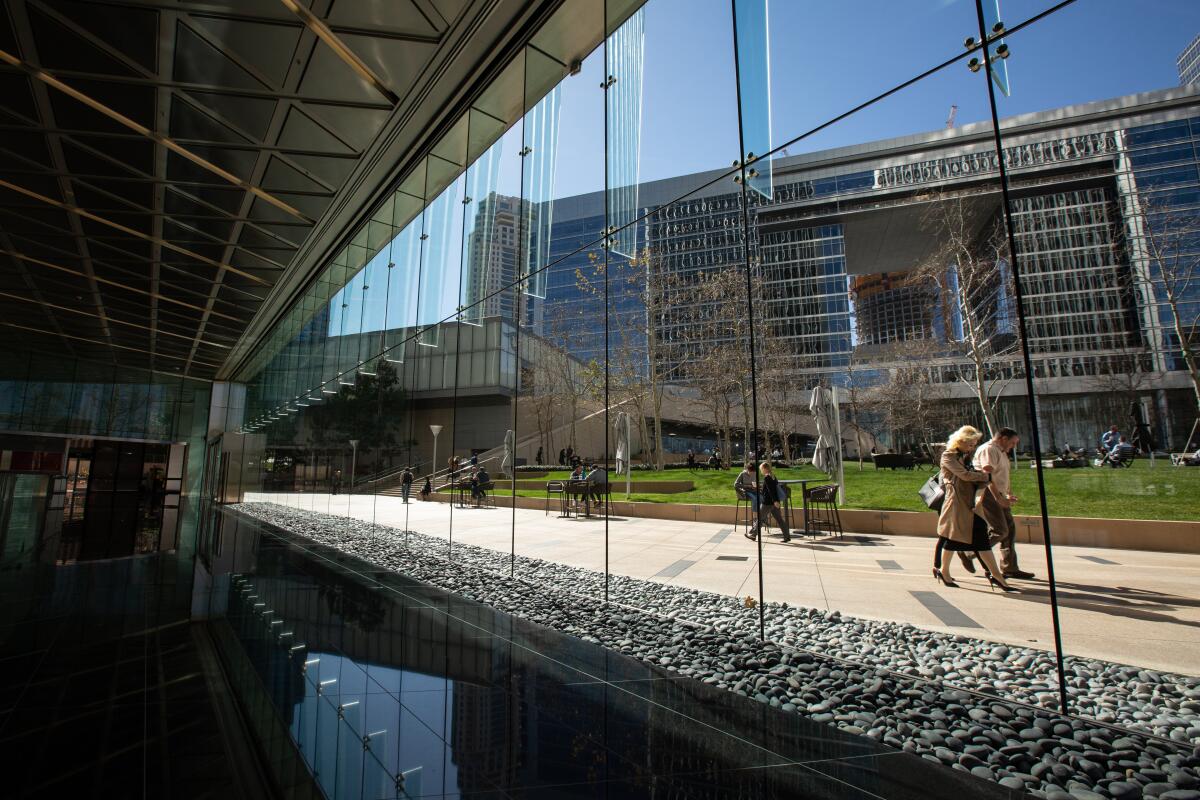
Like the World Trade Center, the Century Plaza Towers were built big to inspire awe and project the status of their builders and occupants. But like their taller, more famous Manhattan counterparts, the Century City towers proved notoriously difficult to fill with paying tenants.
It’s not that they weren’t considered desirable. But the Century Plaza Towers hold a hefty 2.4 million square feet of office space, and every year as much as 300,000 square feet of it empties out as leases expire and tenants depart. The switch to turn on the “no vacancy” sign stayed maddeningly out of reach for a series of owners of the property, even in good times, as new competing skyscrapers sprang up nearby.
Originally known as the Theme Towers, the twin skyscrapers were a key piece of the glamorous original spine of Century City that included the Century Plaza Hotel, where the doormen wore royal red Beefeater uniforms, and the now-demolished ABC Entertainment Center, which housed the live Shubert Theatre, a luxury cinema and a Playboy Club along with the television network’s West Coast headquarters.
The effect was rather fantastical, helping make Century City a fitting successor to the back lot of the 20th Century Fox movie studio, which it replaced. Beginning in the late 1950s, planners and architects laid out the grid for an idealized — some say sanitized — version of a prosperous new city center.
“Century City — the city of the century,” architect Scott Johnson said. “It sounds like a world’s fair, and it kind of was.”
Buildings were designed by some of the most prominent architects of the age, such as I.M. Pei and Welton Becket. The 44-story Theme Towers were designed by Minoru Yamasaki and completed in 1975, four years after the World Trade Center was finished. Yamasaki also designed the Century Plaza hotel.
As was in vogue at the time, Century City was conceived as a place people would enjoy experiencing with their cars. The huge “super blocks” were built with parking structures in the middle.
“People wave at the front door when they arrive and then park in back,” Johnson said, effectively entering through the rear door. For decades, few pedestrians were seen on sidewalks even during peak work hours.
In the last decade, Century City and other alternative downtowns such as Warner Center and Irvine have taken steps to entice people out of their cars, Johnson said, which appeals to many newer office dwellers and residents.

“If Century City was built for boomers, it’s now being occupied by millennials,” said Johnson, who designed prominent Century City skyscrapers Fox Plaza, 1999 Avenue of the Stars, Constellation Place and a 37-story office tower planned for construction shortly at 1950 Avenue of the Stars.
Billions of dollars’ worth of real estate development has taken place recently or is underway, including the $1-billion makeover of Westfield Century City shopping center and the $2-billion project to upgrade the Century Plaza while adding two 46-story condominium towers in a Fairmont hotels-branded complex. The hotel is slated to reopen this year and a Purple Line subway station is set to open in Century City in 2025.
At Century Plaza Towers, which were recently valued at $2.4 billion, managing owner JPMorgan Chase & Co. and its partners “invested heavily” over the last decade, a representative said, to upgrade the towers and the site shared with 2000 Avenue of the Stars. The upscale office building that replaced the ABC Entertainment Center in 2006 is also held by JPMorgan and its partner Hines.
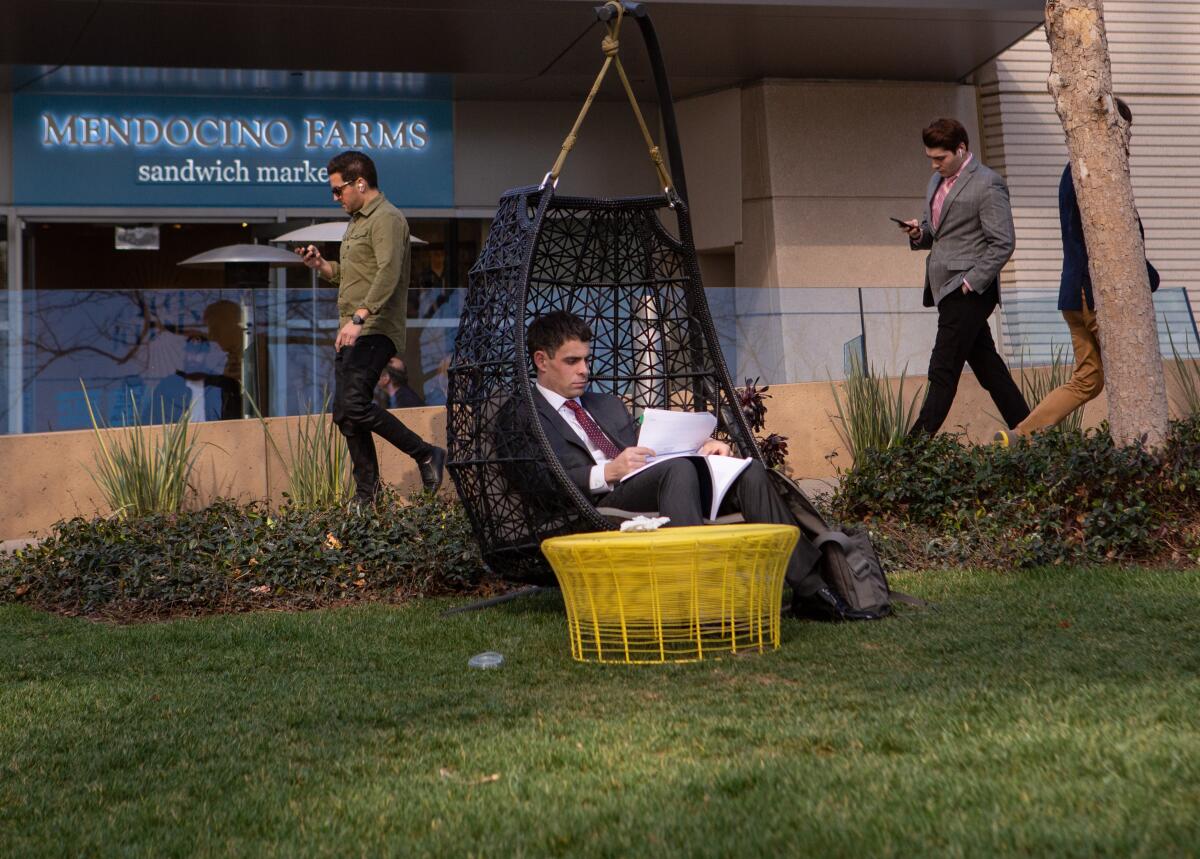
The complex now known as Century Park was made more pleasant in multiple ways for the nearly 10,000 people who work there, said Pat McCroskey, who oversees leasing and management of the property for CBRE.
It now has two coffee shops, a sundries store and seven restaurants including Craft, a fancy spot frequented by celebrities and their agents.
A four-acre park between the buildings has piped-in music and plush chairs and beanbags for people who want to eat or work outdoors. It also has live music sometimes — Moby and Stevie Wonder have performed there. The Annenberg Space for Photography exhibition hall hosts free exhibits and special events.
The Century Plaza Towers got new glassed-in lobbies and a valet-staffed auto court on Century Park East, effectively creating a new entrance. There is a gym for tenants only, conference rooms and a lounge for tenants and guests where people could be seen on a recent afternoon tapping on laptops and watching television.
Building operators have also experimented with what McCroskey called “spec suites,” offices that have been made nearly tenant-ready with marble-clad reception areas, glassed-in offices and kitchens outfitted with appliances.
“We built something people were looking for but didn’t want to go through the hassle of building themselves,” he said.
The glass offices are more in keeping with conventional workplace designs than the open floor plans favored by many tech and entertainment companies, a hallmark of the more traditional white-collar businesses that tend to favor Century City. About 60% of the tenants at Century Plaza Towers are law firms, and the arrival of Manatt, Phelps & Phillips helped fill the complex with a 116,000-square-foot lease last year.
The bulk of the towers’ other tenants are in finance and professional services, CBRE said.
It’s common for large institutional owners to sell real estate holdings after five or 10 years and reap their profits, but JPMorgan is going to hang on to Century Park, Executive Director Brian Okrent said. The owners recently refinanced loans on the property that were coming due.
“We obviously voted with our checkbook by staying in,” Okrent said. “We like the long-term prospects for Century City.”
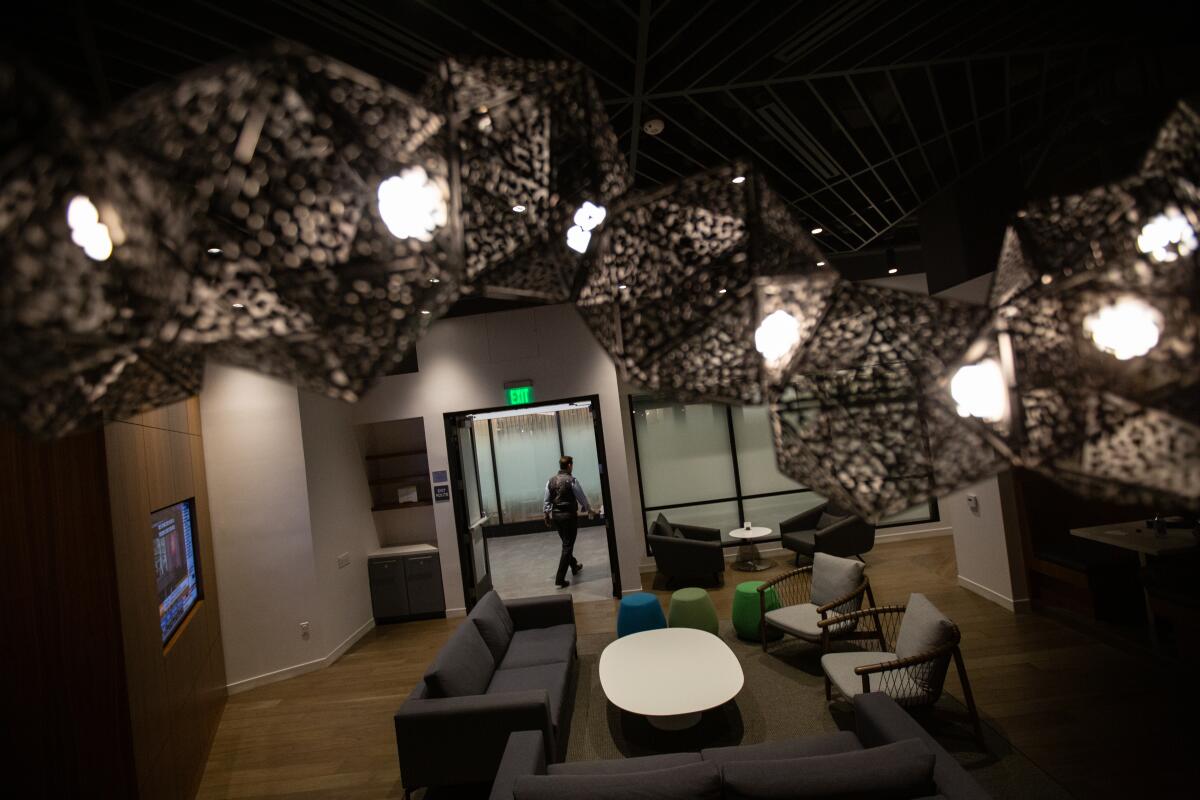
More to Read
Inside the business of entertainment
The Wide Shot brings you news, analysis and insights on everything from streaming wars to production — and what it all means for the future.
You may occasionally receive promotional content from the Los Angeles Times.


